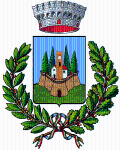Descrizione
Il borgo di Vitignano sorge attorno all'antica villa della famiglia Mocenni.
Troviamo menzione di Vitignano già in due documenti del 1197 e 1199, per un affitto di terreni e per dei servizi nel Molino (Pianella). Si trattava quindi presumibilmente di un villaggio quando nel 1210 fu donato all’Abbazia di S.Salvatore nel testamento di Ranuccio da Monteorgiale. Altre fonti riportano nel 1271 l’elezione del rettore del luogo da parte del Consiglio Generale di Siena.
Nel 1429 Antonia e Nanna Bindi, lasciano in dote la fortezza ai mariti della famiglia Luti che già nel 1449 la vogliono alienare insieme al palazzo; l’acquisterà Francesco di Giovanni Luti fra il 1450 e il 1453, insieme a 4 poderi.
Il 7 Luglio 1554, durante la “Guerra di Siena” Vitignano fu conquistato ed incendiato dalle truppe imperiali. Dal 1668 è documentata la Villa di proprietà Ugurgeri. La Torre simbolo di Vitignano (menzionata dal Luti nel 1481) ha origine nel XIV secolo: faceva probabilmente parte del sistema difensivo del castello di Cerreto, come Poggiarone, Tomarecchio e Quercia. Le murature attuali sono in parte ascrivibili al XVI secolo ed il restauro è avvenuto all'inizio del XX secolo. Vitignano è un toponimo di origine latina.
La località di Vitignano è anche famosa per la fonte sorgiva che si trova lungo il viale che conduce al borgo. A questa fonte attingono tuttora l'acqua i suoi abitanti e molti altri chiantigiani. Non lontano si possono visitare le rovine del castello di Cerreto, la piana di Montaperti e la villa di Montechiaro. A poche centinaia di metri da Vitignano, sulla strada per ritornare a Pianella, si trova il grazioso abitato di Pensieri di Sopra e più in basso, Pensieri di Sotto.
English version:
The village of Vitignano surrounds the old Mocenni family villa.
Vitignano is mentioned in two documents from 1197 and 1199, regarding the rental of lands and services at the Mill (Pianella). So it was probably already a village when in 1210 it was bequeathed to the Abbey of S. Salvatore in Ranuccio da Monteorgiale's will. Other sources tell of the 1271 election of the rector by the General Council of Siena.
In 1429 Antonia and Nanna Bindi left the fortress to the husbands of the Luti family, who in 1449 decided to sell it along with the palazzo; it was acquired by Francesco di Giovanni Luti betwee 1450 and 1453, along with 4 farms.
On July 7,1554, during the “War of Siena,” Vitignano was conquered and burned by the imperial troops. From 1668 on the Villa has been documented as the property of the Ugurgeri family. Vitignano's symbolic Tower (mentioned by Luti in 1481) was originally built in the 14th century, and was probably part of the defensive system of the Castle of Cerreto, as were Poggiarone, Tomarecchio and Quercia. The current walls are in part from the 16th century and were restored at the beginning of the 20th century. The name Vitignano is of Latin origin.
Vitignano is also famous as the location of the underground spring found along the road leading to the village. Local residents and other from the Chianti area still draw water here. Not far away one can visit the ruins of the castle of Cerreto, the plain of Montaperti and the Villa of Montechiaro. A few hundred meters from Vitignano, on the road heading back to Pianella, is the lovely burg of Pensieri di Sopra, and just below it, Pensieri di Sotto.
Modalità d'accesso
accesso libero
Indirizzo
Punti di contatto
Ultimo aggiornamento: 4 marzo 2024, 13:14

